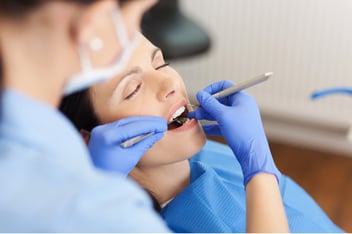Rebuilding Smiles: An Overview of Restorative Dentistry
Restorative dentistry plays a critical role in managing oral health problems and restoring the mouth to a functional and aesthetic state. While it may not be a term you hear every day, understanding what restorative dentistry is and the treatments it involves is crucial in maintaining your oral health. Here, we dive into the various restorative procedures, their benefits, and when they might be needed.
Understanding Restorative Dentistry
Restorative dentistry refers to the integrated management of oral health issues and the restoration of the mouth to functional and aesthetic conditions. The primary goal is to preserve natural teeth as much as possible, but restorative dentistry also involves the replacement of missing teeth.
Common Restorative Dentistry Procedures
-
Dental Fillings: Fillings are the most common type of restorative treatment. When you have a cavity, your dentist will remove the decayed tooth material, clean the affected area, and then fill the cleaned-out cavity with a filling material such as amalgam, composite resin, gold, or porcelain. This prevents further decay and restores the tooth's function.
-
Crowns: A dental crown is a tooth-shaped "cap" that is placed over a damaged tooth to restore its shape, size, strength, and appearance. They are used when the tooth is broken, weakened by decay, or has a large filling.
-
Bridges: Dental bridges are used to replace one or more missing teeth. They span the space where the teeth are missing, with crowns on either side of the gap attached to the artificial tooth/teeth in the middle.
-
Dentures: Dentures are removable replacements for missing teeth and surrounding tissues. They can be complete (for when all the teeth are missing) or partial (when some natural teeth remain).
-
Dental Implants: Dental implants are a more permanent solution for missing teeth. They involve surgically implanting a titanium post into the jawbone, which acts as an artificial tooth root, and then attaching a crown to this post.
-
Root Canal Therapy: A root canal is a treatment used to repair and save a tooth that is badly decayed or infected. It involves removing the damaged area of the tooth (the pulp), cleaning and disinfecting it, then filling and sealing it.
The Benefits of Restorative Dentistry
Restorative dentistry offers numerous benefits, including:
-
Improved Oral Health: By fixing cavities or damage, restorative procedures prevent further decay or injury, leading to improved oral health.
-
Enhanced Function: Restorative treatments repair and replace teeth, improving chewing function and overall comfort.
-
Increased Confidence: By restoring the appearance of the teeth, restorative dentistry can greatly enhance a person's self-esteem and confidence.
-
Prevention of Future Dental Issues: Timely restorative treatments can prevent more complex dental issues down the line, saving time and money in the long term.
Conclusion
Whether you're dealing with a simple cavity or missing teeth, restorative dentistry offers solutions that not only repair damage but also enhance the look of your smile. At Clove Dental, we're committed to helping you maintain a healthy, radiant smile with the help of restorative dentistry. If you're dealing with any dental issues, don't hesitate to reach out to us. Let's work together to restore your smile and confidence.
.png?width=80&height=80&name=Clove%20Dental%20White%20Small%20(28).png)



